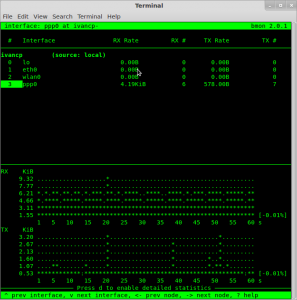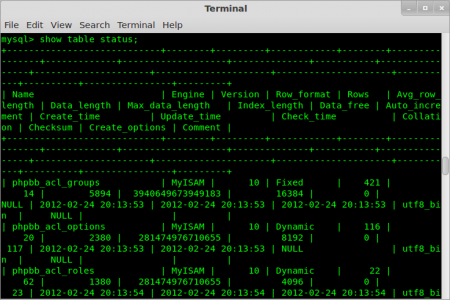Custom auto increment values
The auto_increment for MySQL fields are very useful but what about if I need a custom auto-increment like a custom format like 001-000033,
001-000034 001-000035 001-000036 ...
To make it possible we have an option based on past article MySQL Sequences:
- Create the table to store the current sequence values:
CREATE TABLE _sequence ( seq_name VARCHAR(50) NOT NULL PRIMARY KEY, seq_group VARCHAR(10) NOT NULL, seq_val INT UNSIGNED NOT NULL );
- Create a function to get and increment the current value:
delimiter // DROP FUNCTION IF EXISTS getNextCustomSeq// CREATE FUNCTION getNextCustomSeq ( sSeqName VARCHAR(50), sSeqGroup VARCHAR(10) ) RETURNS VARCHAR(20) BEGIN DECLARE nLast_val INT; SET nLast_val = (SELECT seq_val FROM _sequence WHERE seq_name = sSeqName AND seq_group = sSeqGroup); IF nLast_val IS NULL THEN SET nLast_val = 1; INSERT INTO _sequence (seq_name,seq_group,seq_val) VALUES (sSeqName,sSeqGroup,nLast_Val); ELSE SET nLast_val = nLast_val + 1; UPDATE _sequence SET seq_val = nLast_val WHERE seq_name = sSeqName AND seq_group = sSeqGroup; END IF; SET @ret = (SELECT concat(sSeqGroup,'-',lpad(nLast_val,6,'0'))); RETURN @ret; END// delimiter ;
- Create a stored procedure to modify a current sequence value:
delimiter // DROP PROCEDURE IF EXISTS sp_setSeqCustomVal// CREATE PROCEDURE sp_setCustomVal(sSeqName VARCHAR(50), sSeqGroup VARCHAR(10), nVal INT UNSIGNED) BEGIN IF (SELECT COUNT(*) FROM _sequence WHERE seq_name = sSeqName AND seq_group = sSeqGroup) = 0 THEN INSERT INTO _sequence (seq_name,seq_group,seq_val) VALUES (sSeqName,sSeqGroup,nVal); ELSE UPDATE _sequence SET seq_val = nVal WHERE seq_name = sSeqName AND seq_group = sSeqGroup; END IF; END// delimiter ;
Testing the new functions:
- Create a table:
CREATE TABLE custom_autonums ( id INT NOT NULL PRIMARY KEY AUTO_INCREMENT, seq_1 VARCHAR(20), -- custom sequence 1 seq_2 VARCHAR(20), -- custom sequence 2 UNIQUE(seq_1), UNIQUE(seq_2) );
- Create trigger:
delimiter // DROP TRIGGER IF EXISTS custom_autonums_bi// CREATE TRIGGER custom_autonums_bi BEFORE INSERT ON custom_autonums FOR each ROW BEGIN SET NEW.seq_1 = getNextCustomSeq("seq_1","001"); SET NEW.seq_2 = getNextCustomSeq("seq_2","DBA"); END// delimiter ;
- Insert some values:
INSERT INTO custom_autonums (id) VALUES (NULL),(NULL),(NULL); SELECT * FROM custom_autonums; +----+------------+------------+ | id | seq_1 | seq_2 | +----+------------+------------+ | 4 | 001-000001 | DBA-000001 | | 5 | 001-000002 | DBA-000002 | | 6 | 001-000003 | DBA-000003 | +----+------------+------------+ 3 ROWS IN SET (0.00 sec)
- Altering current values:
CALL sp_setCustomVal('seq_1','001',675); INSERT INTO custom_autonums (id) VALUES (NULL),(NULL),(NULL); SELECT * FROM custom_autonums; +----+------------+------------+ | id | seq_1 | seq_2 | +----+------------+------------+ | 4 | 001-000001 | DBA-000001 | | 5 | 001-000002 | DBA-000002 | | 6 | 001-000003 | DBA-000003 | | 7 | 001-000676 | DBA-000004 | | 8 | 001-000677 | DBA-000005 | | 9 | 001-000678 | DBA-000006 | +----+------------+------------+ 6 ROWS IN SET (0.00 sec)
Enjoy!




 Those who have used PostgresSQL usually gets lazy when write the SQL code to auto-numeric fields, but we miss that feature when we are in a MySQL database.
Those who have used PostgresSQL usually gets lazy when write the SQL code to auto-numeric fields, but we miss that feature when we are in a MySQL database.